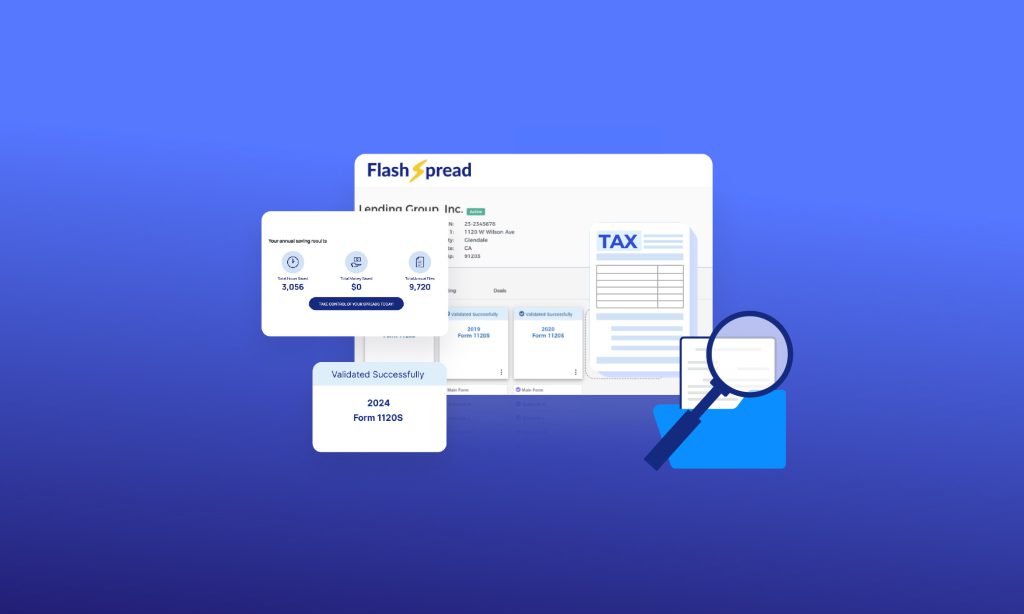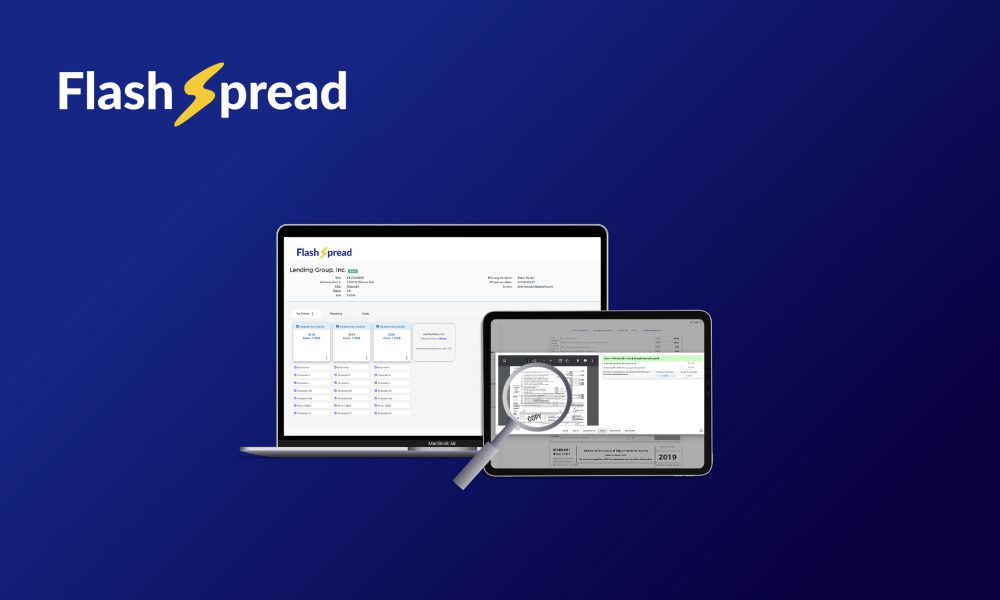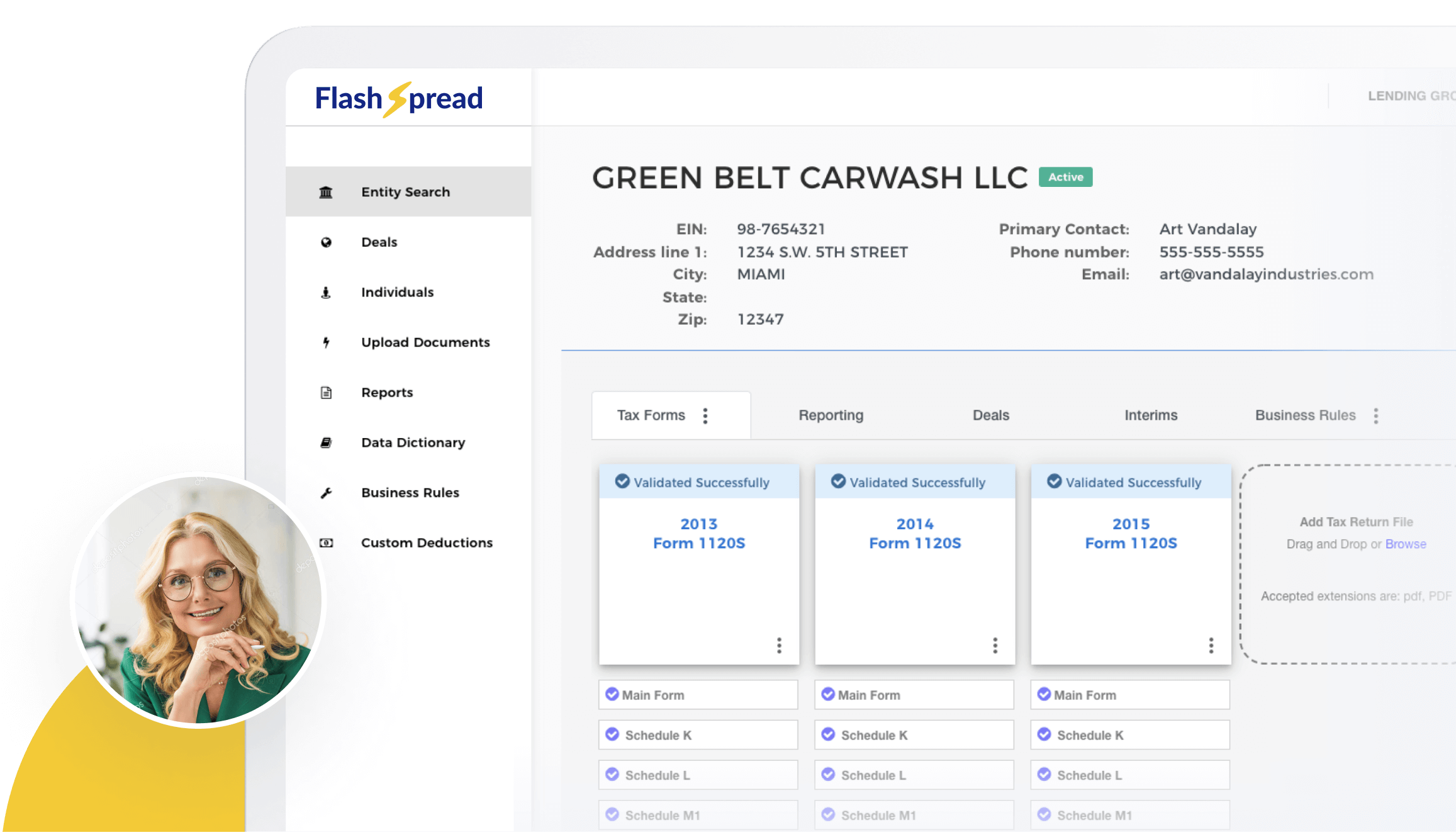Today, transparency isn’t just a buzzword; it’s a foundational requirement in business. But for many lenders, that transparency is obstructed by one critical issue: inconsistent, messy, or incomplete financial data.
Commercial lending involves layers of complexity, from borrower creditworthiness to regulatory compliance and risk modeling. Yet too often, decisions are made using spreadsheets filled with manually extracted figures from scanned tax returns or inconsistent templates that vary across teams. This creates confusion, delays, and avoidable risk in what should be a streamlined, data-driven process.
This blog explores why clean financial data is the foundation of effective commercial lending and how automating that process can help lenders improve speed, accuracy, and scalability, without sacrificing confidence or compliance.
Table of Contents
The Cost of Messy Data
Data issues aren’t just frustrating for lenders and borrowers; they come with a high price tag. Inaccurate or incomplete financial data slows down workflows, creates confusion during underwriting, and forces teams to spend valuable time double-checking figures, rather than moving deals forward.
Poor data quality can cost financial institutions as much as $15 million each year, stemming from hidden reporting errors, regulatory fines, and costly mispricing that impact both compliance and profitability.
In commercial lending, the consequences are even more severe. Common pain points include:
- Inaccurate borrower assessments
- Missed risk indicators during credit analysis
- Slower approvals and processing delays
- Frustration for both borrowers and internal teams
When lenders rely on PDFs, spreadsheets, and manually keyed documents, which are often inconsistent in structure, even small mistakes can lead to major setbacks. Clean, structured financial data allows lenders to avoid these pitfalls while improving both confidence and compliance.
Transparency Starts With Standardization

To achieve true transparency, lenders need more than access to data. They need clean, standardized data that can be trusted, audited, and scaled.
With accurate, normalized financial data, you can:
- Reduce manual review times
- Deliver faster credit decisions
- Strengthen compliance audits
- Provide clear explanations to borrowers and regulators
Standardization allows lending teams to move faster without compromising accuracy, supporting both compliance and customer trust.
A Compliance-Ready Foundation
For commercial lenders, compliance is more than a box to check, it’s a core part of building trust and long-term viability. But when financial data comes in varied formats or contains inconsistencies, maintaining regulatory readiness becomes a constant uphill battle.
Lenders are responsible for validating income, identifying red flags, and proving that each decision meets federal and institutional standards. Without clean, structured data, these tasks become harder, slower, and more error-prone.
Worse, when data can’t be traced back to its original source or is inconsistently documented, audit failures or regulatory scrutiny can quickly follow.
Standardized, verifiable financials help lenders maintain accurate documentation trails, improve internal audits, and protect against compliance missteps. They create a defensible framework that reduces risk, both operational and reputational.
It’s Also a Borrower Trust Issue
Borrowers are also affected when their data is handled inconsistently. Common issues include:
- Duplicate requests for documentation
- Delayed communication
- Confusing or contradictory feedback
From the borrower’s perspective, these issues signal inefficiency or a lack of professionalism, which can push them toward competitors.
On the other hand, when borrowers receive fast, data-driven decisions based on their actual performance, they’re more likely to trust the lender and return for future financing needs.
Subscribe to BeSmartee 's Digital Mortgage Blog to receive:
- Mortgage Industry Insights
- Security & Compliance Updates
- Q&A's Featuring Mortgage & Technology Experts
Efficiency and Growth Are on the Line
Every commercial lending team wants to grow, but growth is only sustainable if it’s supported by operational efficiency. Unfortunately, messy or inconsistent borrower data slows everything down, from the initial intake to underwriting and final approval.
Time spent sorting through PDF tax returns or cleaning up Excel files is time not spent closing new deals. Manual work eats away at margins and pulls experienced professionals away from more strategic tasks. Worse, slow response times can drive creditworthy borrowers to faster-moving competitors.
When data is clean and accessible from the start, lenders can reduce cycle times, serve more clients, and scale without sacrificing accuracy. Clean data not only helps save time but also prepares you to compete in a market that increasingly values speed, service, and transparency.
Why Clean Data Enables Better Analytics
Once your data is structured and standardized, you unlock the potential for real-time insights. Lenders can:
- Track portfolio performance with greater granularity
- Spot early warning signs across borrower segments
- Run scenario analyses with greater accuracy
- Optimize pricing and risk modeling strategies
Without clean inputs, analytics become unreliable and harder to scale. That’s why financial data hygiene isn’t just about accuracy but also about unlocking the long-term value. Lenders that invest in structured data gain a foundation for innovation, agility, and proactive risk management.
FlashSpread: Clean Financial Data at Scale

For many lenders, the reality of spreading borrower financials still involves inconsistent spreadsheets, scanned PDFs, and manual data entry. Without clean data, it’s nearly impossible to underwrite efficiently or confidently.
FlashSpread automates this process. It transforms unstructured borrower documents into clean, standardized, audit-ready financial spreads within minutes. That means fewer errors, faster turnaround times, and a clearer picture of borrower health.
With FlashSpread, lenders can:
- Instantly convert scanned tax returns into standardized financial spreads
- Automatically calculate DSCR, EBITDA, and other credit ratios
- Minimize manual entry and eliminate spreadsheet inconsistencies
- Standardize borrower profiles across the portfolio
- Trace every number back to its original source for audit transparency
This enables faster decisions, better compliance, and scalable operations—all powered by clean, structured data.
Best Practices for Maintaining Clean Data
To make clean financial data the rule, commercial lenders should embed data hygiene practices throughout their workflows. Here are several ways to make that happen:
- Standardize intake processes to minimize file variability
- Leverage automation for document parsing and financial spreading
- Use data validation rules at the point of upload to catch errors early
- Train lending staff to spot inconsistencies and anomalies
- Schedule routine audits to ensure loan files stay consistent over time
In addition, consider creating cross-functional feedback loops between credit, compliance, and operations teams. When everyone aligns on what “clean” means, quality improves across the board.
These practices don’t just create cleaner data; they lead to faster decisions, stronger compliance, and better borrower experiences.
Roundup
Clean financial data is foundational to a modern, scalable commercial lending operation. It’s what enables transparency for regulators, speed for lending teams, and clarity for borrowers. In an environment where deals are growing in size and complexity, guesswork is no longer an option. Structured data empowers better decision-making, stronger relationships, and faster cycles—all of which are essential in today’s highly competitive market.
By prioritizing data quality, through better tools, smarter workflows, and team-wide accountability, lenders can turn one of their biggest pain points into a strategic advantage.
Ready to modernize your financial analysis and bring clean data to the center of your commercial lending process? Learn more about FlashSpread and schedule a demo now.




